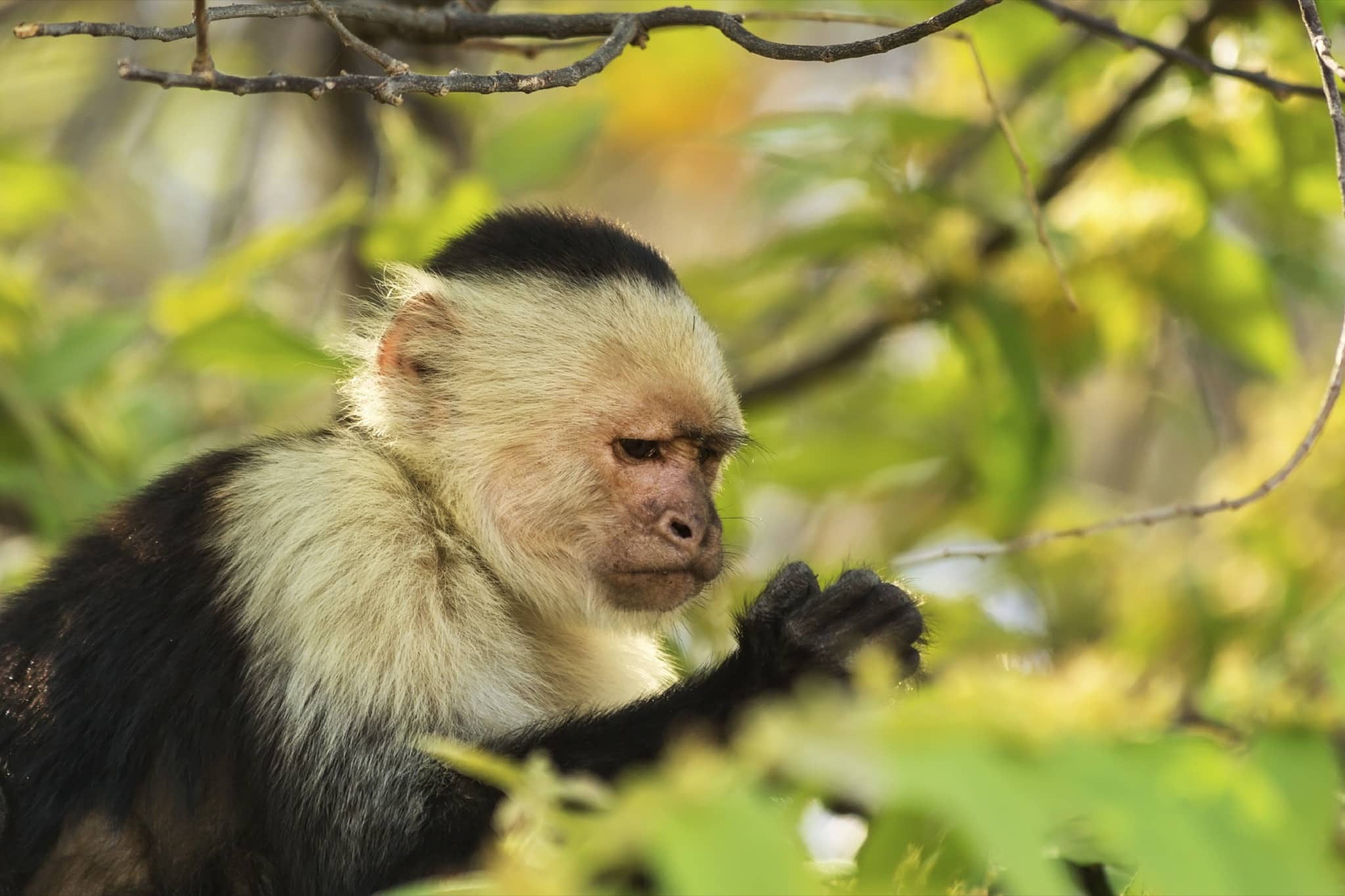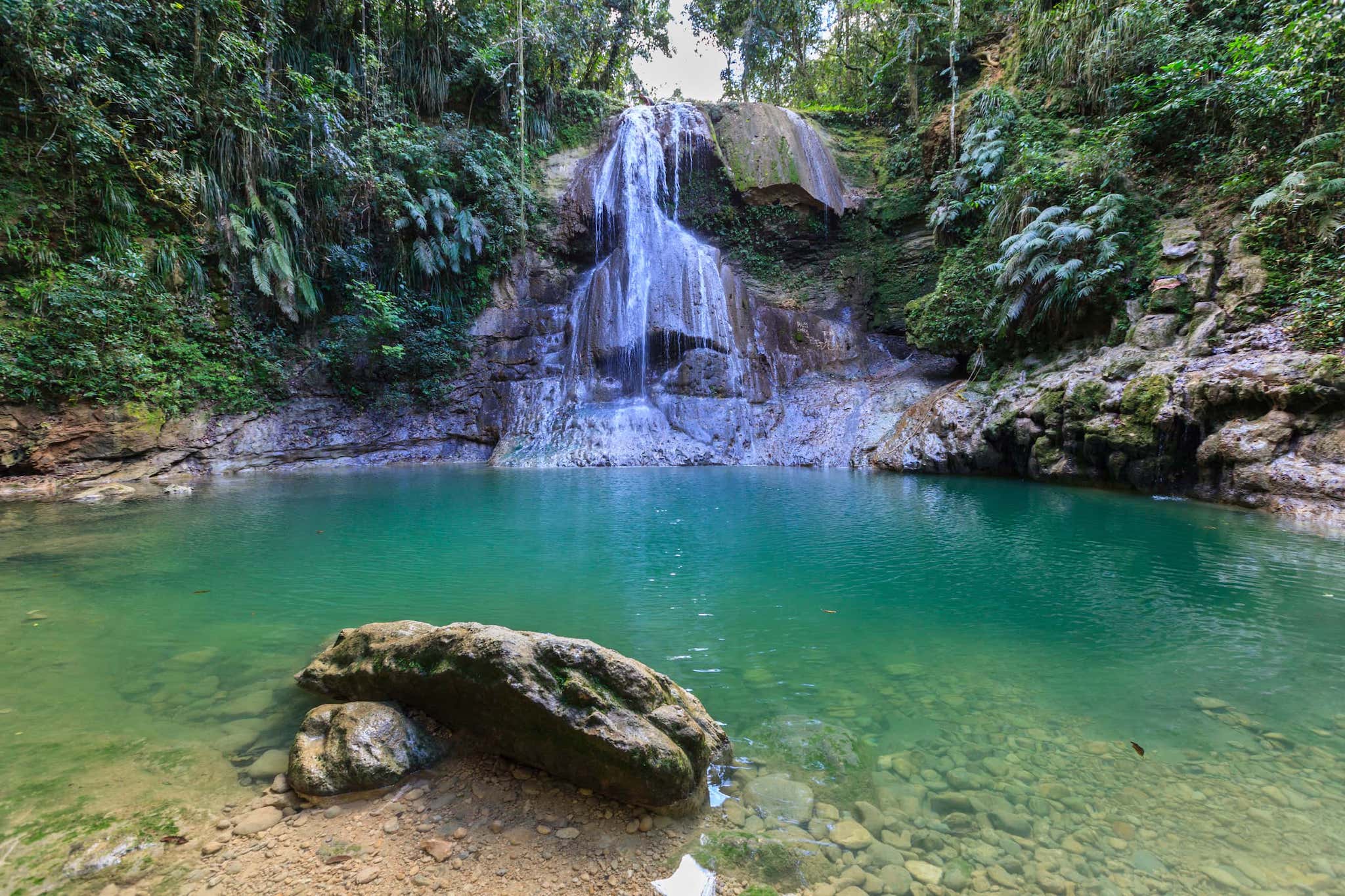With more than 900 species of birds living in the forests of Costa Rica, it’s easy to see why birding is a favorite eco activity. But while you are scanning the skies for avians, don’t forget to search the treetops for monkeys.
Costa Rica’s extensive network of nature preserves provides a safe haven for the most robust populations of primates in Central America. There are five native species of monkeys living in the canopies of Costa Rica’s rainforests. Each type has its own captivating collection of behaviors and quirks, and once you get to know your monkeys, their antics can provide hours of entertaining viewing.
Cotton-top Tamarin
Weighing in at less than a pound when fully grown, the cotton-top tamarin is the smallest monkey in the Americas. This species gets its name from the Mohawk-like tuft of white hair that runs from the top of its head and down the back of its neck and over its shoulders. Cotton-top tamarins are social primates that travel and forage together in family-like groups of up to a dozen. These tiny primates spend their days searching through the trees for insects, fruit, and flower nectar. Cotton-tops are a threatened species due to habitat loss. The jungles of Costa Rica provide a refuge, but sightings are rare.
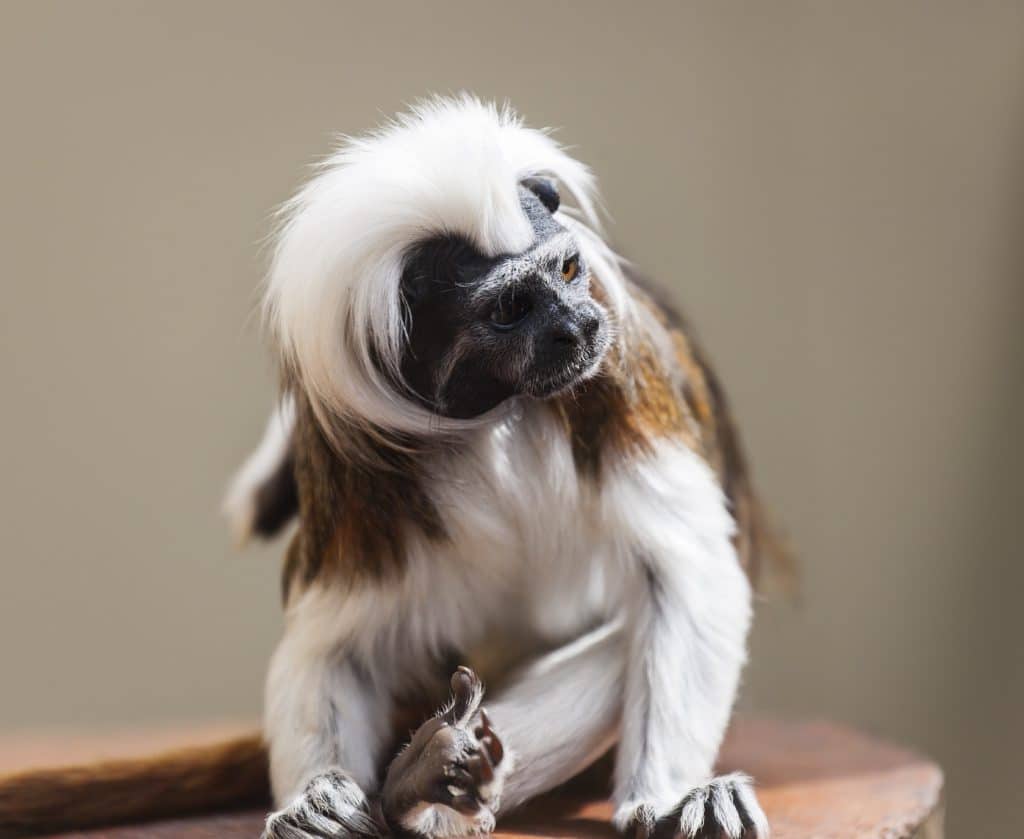
Howler Monkey
There’s a good chance you’ll see howler monkeys in the forests of Costa Rica, and an even better chance you will hear them. These primates are one of the most common primates in Central America, and one of the largest, with males weighing in at up to 30 pounds. Howler monkeys are one of the loudest animals on earth. They have an enlarged bone in their throats that allows them to generate calls that can carry for several miles, even through dense forest canopies. Their howls are often heard at sunrise and sunset, and throughout the day they howl to locate family members, warning of coming thunder and rain, or to alert the forest to the presence of humans.
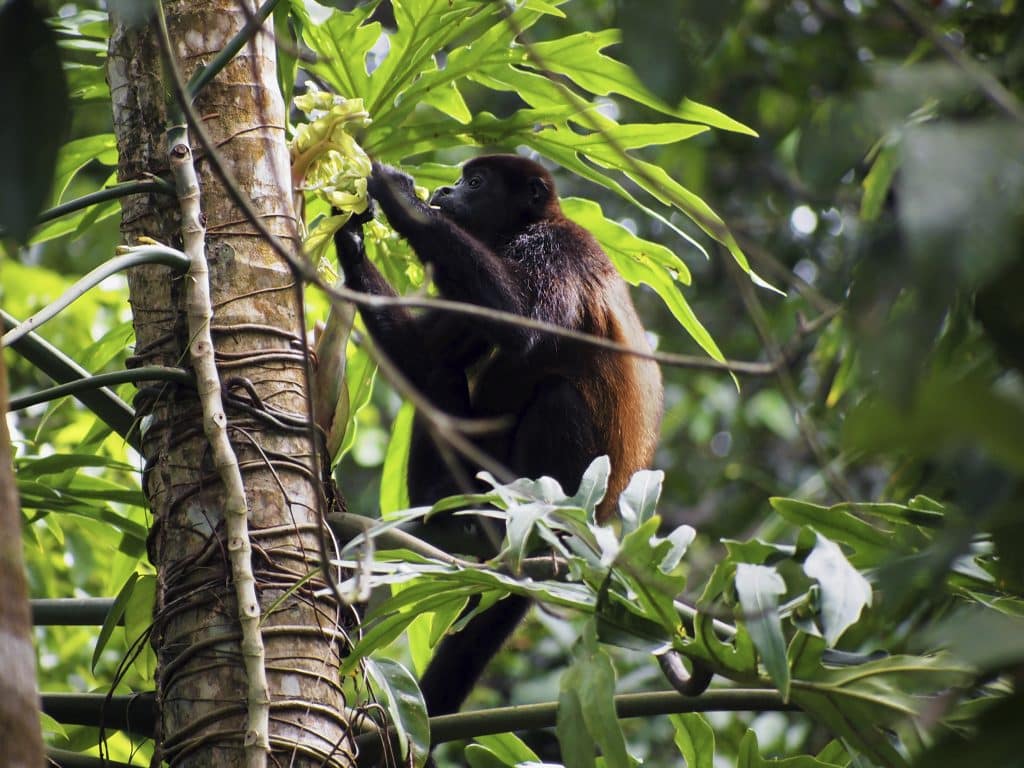
Spider Monkey
You will need to look up high to see these long-limbed, long-tailed rainforest acrobats. Spider monkeys prefer the upper branches of rainforest canopies, where they feed on fruit, leaves, and the occasional bug. They can be seen vaulting from treetop to treetop, making aerial leaps that span distances of up to 30 feet. Their rapid moments through the treetops are made possible by a long branch-gripping tail and hands that lack thumbs. The absence of thumbs allows spider monkeys to form their fingers into a hook-like grip and attach to a waiting tree limb after making a daredevil-like leap. Spider monkeys are social animals that live in groups of thirty or more, often splitting up to forage during the day, and then regrouping at night.
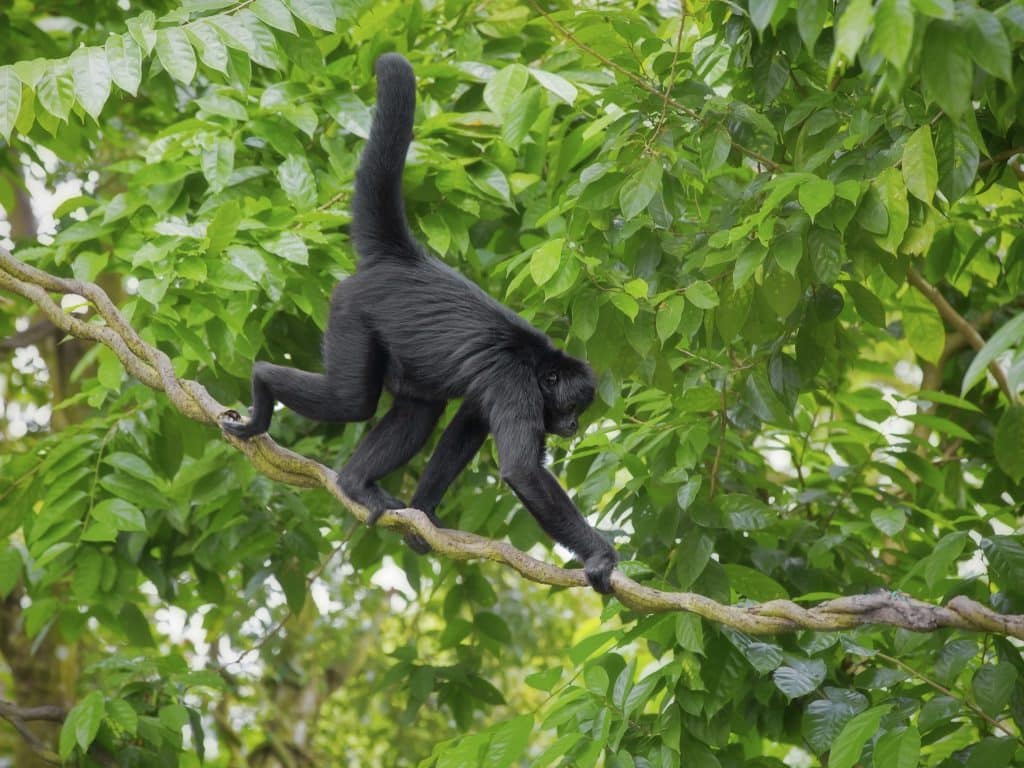
Squirrel Monkey
Watch a group of these agile primates scamper through the trees and you’ll understand the reason why they are called squirrel monkeys. Like the rodents that share the name, these mid-sized monkeys move from branch to branch using their hands and feet, but not their tails. The squirrel monkey’s tail lacks the gripping abilities of other Central American primate species and is used only for balance. They have highly sensitive noses and can smell ripe fruit from a mile or more away. Squirrel monkeys have relatively large brains and are one of the jungle’s cleverest species of primate. They communicate with up to 30 different vocal calls that send messages on everything from predator warnings to romantic intentions and the location and status of a tasty meal.
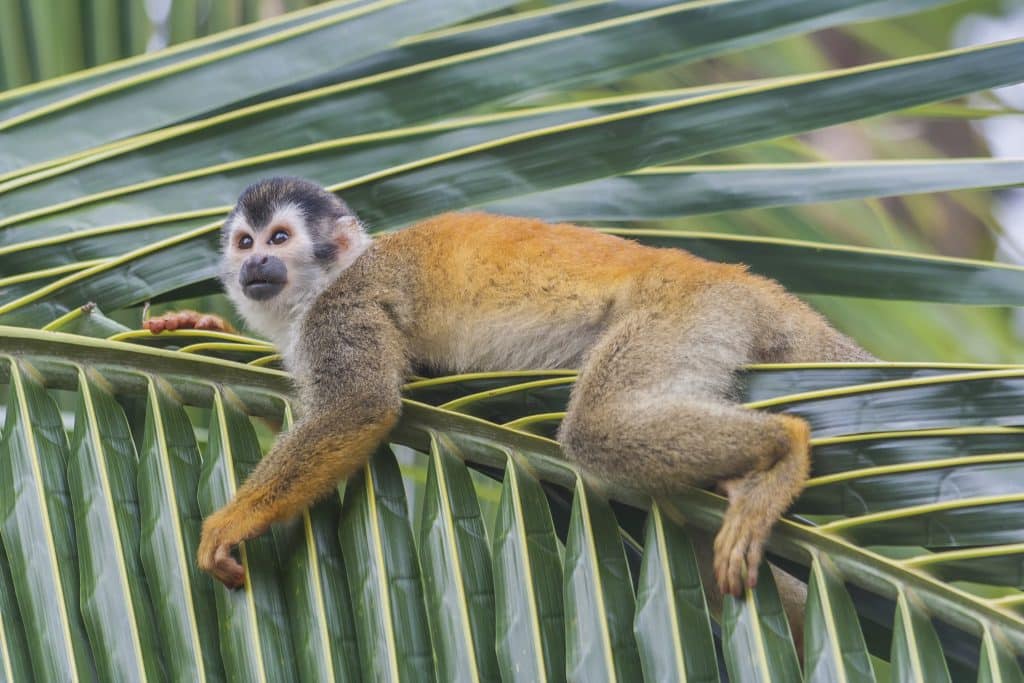
White-faced Capuchin Monkey
When it comes to smarts, the white-faced capuchin takes the prize. These mid-sized monkeys are widely regarded as the most intelligent of any Central and South American primate species. They are known to use rocks and sticks as tools and weapons, and during mosquito season they create their own natural insect propellant by crushing millipede bugs and rubbing the gooey secretions on their back to ward off biting insects and parasites. Capuchins have adapted to live in a wide range of woodland and semi-wooded environments and have life spans of up to 50 years.


